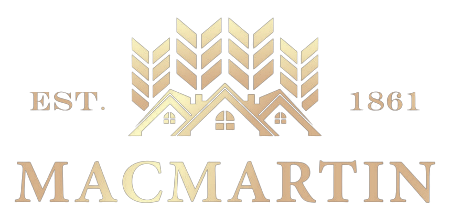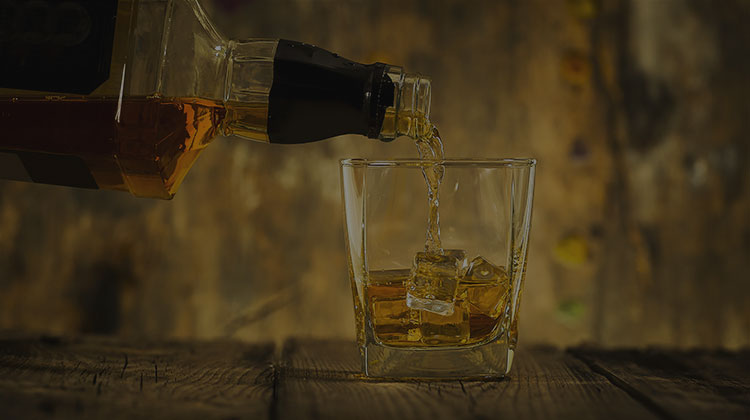The conventional process of making whiskey
Publish:2023-11-01 09:12:26
1. Raw materials: wheat (barley, wheat, rye, malt), cereals (corn)
2. Brewing method:
Step 1: Germination: First of all, Malt or Grain after removal of impurities is soaked in hot water to germinate. The time required during this process varies according to different wheat or cereal varieties, but generally it takes about one to two weeks to germinate. After germinating, it is dried or smoked with Peat. After cooling and storing for about a month, the germination process is complete.
Step 2: Saccharation - the sprouted wheat or cereal stored after a month into a special stainless steel tank to be mashed and cooked into juice, which takes about 8 to 12 hours, usually in the grinding process, temperature and time control can be said to be a very important link, too high temperature or too long time will affect the wort (or the juice of the cereal) quality.
Step 3: Fermentation - The process of adding the cooled wort to the yeast for fermentation, because the yeast can convert the sugar in the wort into alcohol, so after the completion of the fermentation process will produce an alcohol concentration of about 5% to 6% of the liquid, at this time the liquid is called Wash "or Beer", because there are many types of yeast, the impact on the fermentation process is not the same. As a result, the different whisky brands regard the types and quantities of yeast they use as trade secrets and do not readily disclose them to outsiders.
Step 4: Distillation - Generally speaking, distillation has the effect of concentration, so when the wheat or cereals formed after fermentation of low alcohol "Beer", but also need to go through the distillation step to form whiskey, then whiskey alcohol concentration of about 60% ~ 70% is called "new wine", wheat and cereal raw materials used in the distillation method is different. Malt whiskey made from wheat is a single distillation method, that is, a single distillation vessel is used for a second distillation process, and after the second distillation, the distilled wine is cut off the head and the tail, and only the "Heart" in the middle is taken to become a new whiskey.
In addition, the whiskey made from cereal is a continuous distillation method, the use of two distillation vessels in a series way to carry out two stages of distillation process, basically each distillery in the screening of the "heart" amount, there is no fixed and uniform proportion standard, completely in accordance with the distillerys wine requirements to decide on their own. Generally, the proportion of each distillery to take the "wine heart" is more than 60% to 70%, and some distilleries are used to make high-quality whiskey, taking its high purity part. For example, the world-renowned Macallan single malt whisky is like this, that is, only 17% of the "heart" is used as a new spirit to make whiskey.
Step 5: Aging - After distillation, the new wine goes through the aging process, so that it is aged in oak barrels to absorb the natural aroma of the plant, and produce a beautiful amber color, while also gradually reducing the strong stimulation of its high concentration of alcohol. In Scotland, there are relevant laws to regulate the age of wine, that is, the age of each wine is true, and Scotch whisky must be at least three years in wooden barrels before it can be sold. With such strict measures and regulations, on the one hand, the rights and interests of consumers can be protected, and the replacement of Scotch whisky produced in the world has established a high-quality image.
Step 6: Mixing -- Due to the variety of wheat and cereal raw materials, the whiskey produced also has different flavors. At this time, the mixologists of each distillery will mix and blend their own whiskey with different tastes according to their different experiences and the requirements of the brands wine quality. As a result, the blending process and contents of each brand are considered confidential, and the quality of the blended whisky is entirely determined by the taster and the consumer.
2. Brewing method:
Step 1: Germination: First of all, Malt or Grain after removal of impurities is soaked in hot water to germinate. The time required during this process varies according to different wheat or cereal varieties, but generally it takes about one to two weeks to germinate. After germinating, it is dried or smoked with Peat. After cooling and storing for about a month, the germination process is complete.
Step 2: Saccharation - the sprouted wheat or cereal stored after a month into a special stainless steel tank to be mashed and cooked into juice, which takes about 8 to 12 hours, usually in the grinding process, temperature and time control can be said to be a very important link, too high temperature or too long time will affect the wort (or the juice of the cereal) quality.
Step 3: Fermentation - The process of adding the cooled wort to the yeast for fermentation, because the yeast can convert the sugar in the wort into alcohol, so after the completion of the fermentation process will produce an alcohol concentration of about 5% to 6% of the liquid, at this time the liquid is called Wash "or Beer", because there are many types of yeast, the impact on the fermentation process is not the same. As a result, the different whisky brands regard the types and quantities of yeast they use as trade secrets and do not readily disclose them to outsiders.
Step 4: Distillation - Generally speaking, distillation has the effect of concentration, so when the wheat or cereals formed after fermentation of low alcohol "Beer", but also need to go through the distillation step to form whiskey, then whiskey alcohol concentration of about 60% ~ 70% is called "new wine", wheat and cereal raw materials used in the distillation method is different. Malt whiskey made from wheat is a single distillation method, that is, a single distillation vessel is used for a second distillation process, and after the second distillation, the distilled wine is cut off the head and the tail, and only the "Heart" in the middle is taken to become a new whiskey.
In addition, the whiskey made from cereal is a continuous distillation method, the use of two distillation vessels in a series way to carry out two stages of distillation process, basically each distillery in the screening of the "heart" amount, there is no fixed and uniform proportion standard, completely in accordance with the distillerys wine requirements to decide on their own. Generally, the proportion of each distillery to take the "wine heart" is more than 60% to 70%, and some distilleries are used to make high-quality whiskey, taking its high purity part. For example, the world-renowned Macallan single malt whisky is like this, that is, only 17% of the "heart" is used as a new spirit to make whiskey.
Step 5: Aging - After distillation, the new wine goes through the aging process, so that it is aged in oak barrels to absorb the natural aroma of the plant, and produce a beautiful amber color, while also gradually reducing the strong stimulation of its high concentration of alcohol. In Scotland, there are relevant laws to regulate the age of wine, that is, the age of each wine is true, and Scotch whisky must be at least three years in wooden barrels before it can be sold. With such strict measures and regulations, on the one hand, the rights and interests of consumers can be protected, and the replacement of Scotch whisky produced in the world has established a high-quality image.
Step 6: Mixing -- Due to the variety of wheat and cereal raw materials, the whiskey produced also has different flavors. At this time, the mixologists of each distillery will mix and blend their own whiskey with different tastes according to their different experiences and the requirements of the brands wine quality. As a result, the blending process and contents of each brand are considered confidential, and the quality of the blended whisky is entirely determined by the taster and the consumer.
Recommend

 Change
Change

 Change
Change










